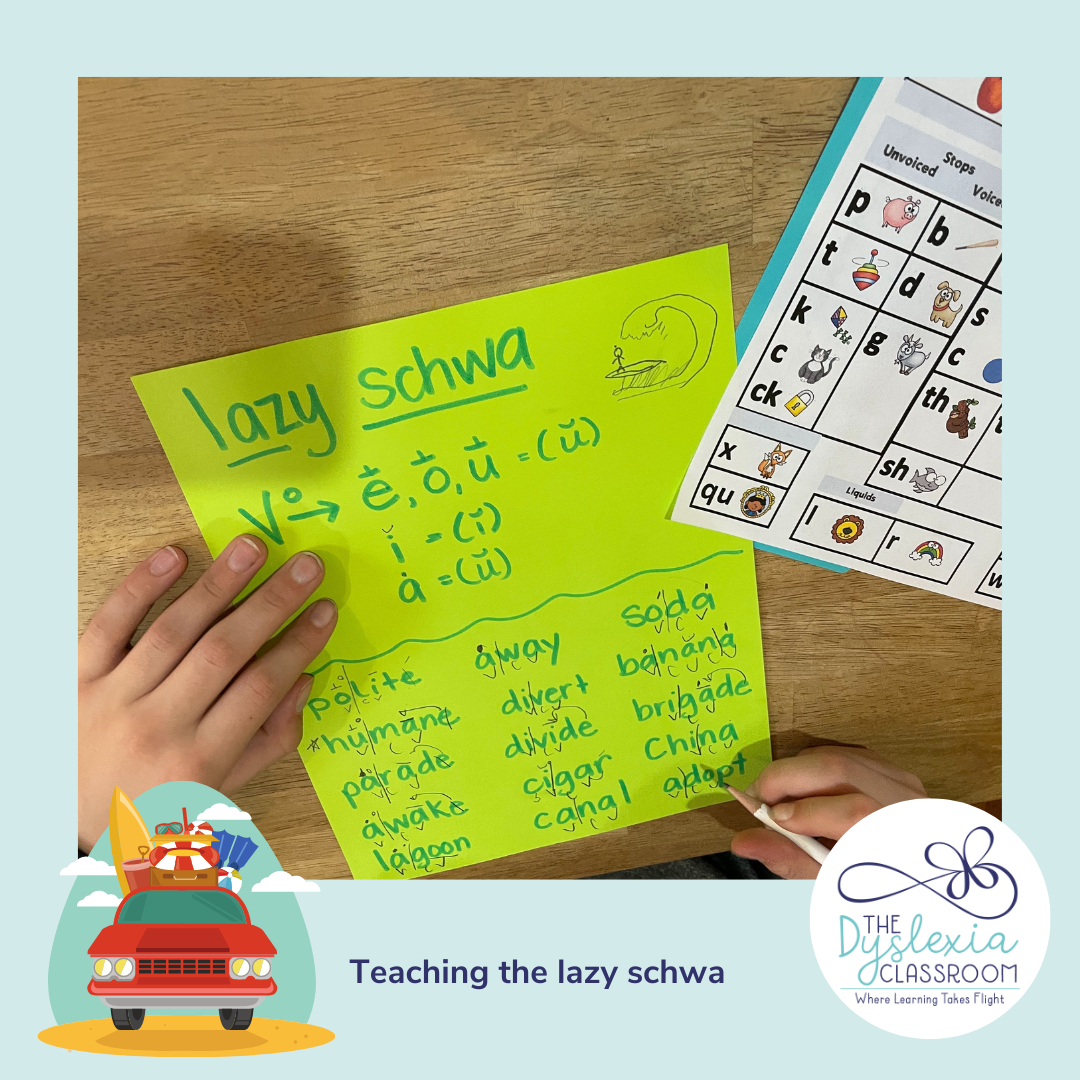Teaching The Schwa Sound
I am heading off to the beach this week and looking forward to a "less stressed" and relaxing time. You may be asking, what does this have to do with reading instruction?

The English language is stress-timed, and when spoken, there is a natural rhythm and fluidity that aids in comprehension, pronunciation, syntax, and expression. The impact of the stressed and unstressed syllables determines spoken sounds, especially vowels.
Stressed And Unstressed Syllables
Before my therapist training, I had never thought about the impact of stressed and unstressed syllables on spelling, pronunciation, syntax, and meaning. I honestly didn't know that the English language is a stressed-time language or what that meant for instruction. Now, I see that explicitly teaching the concept of stressed and unstressed syllables to my students aids in their decoding, encoding, and comprehension.
A stressed syllable is the part of the word that receives a stronger syllable mark. This is noted by the articulation of the word with the mouth open wider, the voice being louder, and the sound being held longer.
When we stress a syllable or word, it is emphasized. This can impact the meaning and pronunciation of words.

Teaching The Schwa Sound
Watch the video 👆to see more information, and examples, about teaching schwa, and read this blog for more tips!
Do you have any fun strategies or tips for teaching schwa?

This information is the intellectual property of @2016 The Dyslexia Classroom. Do not use or repurpose without expressed permission from The Dyslexia Classroom. Please give The Dyslexia Classroom an attribution if you use, reference, or quote/paraphrase copyrighted materials. This includes but is not limited to blogs, social media, and resources.



